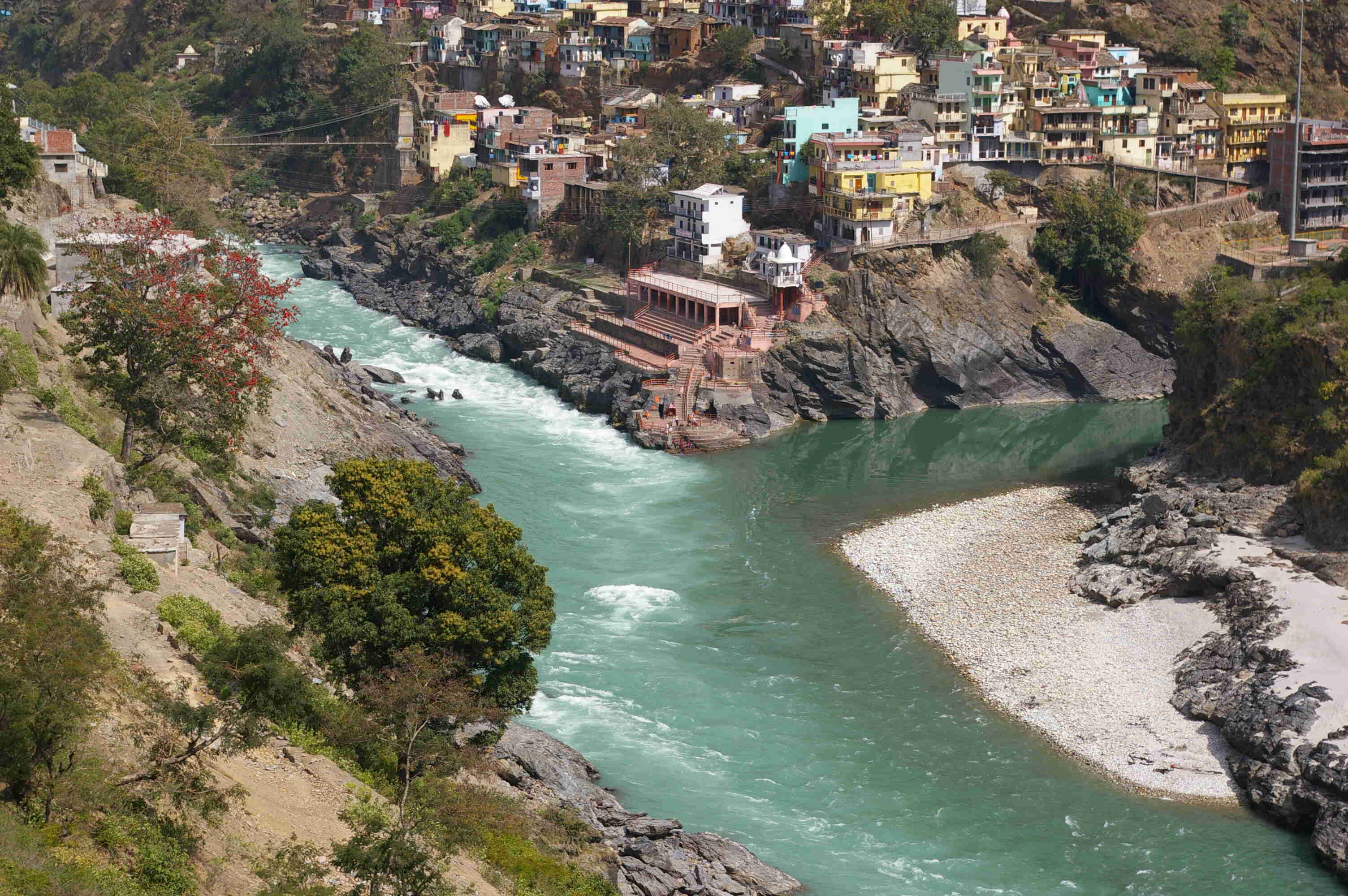
Confluence, a term derived from the Latin word “confluere” meaning “to flow together,” refers to the point where two rivers or streams merge into one. It is a remarkable natural phenomenon that occurs all over the world and holds great geographical significance. The confluence not only creates breathtaking landscapes but also brings together different ecosystems, cultures, and historical narratives.
In this article, we will delve into the mesmerizing world of confluences and uncover 11 astounding facts about these unique geographical wonders. From the incredible formations they create to the ecological impact they have, prepare to be fascinated by the power and beauty of confluences.
Key Takeaways:
- Confluences are where rivers meet, creating stunning color contrasts and unique ecosystems. They hold cultural and historical significance, symbolizing unity and the power of diversity.
- The merging of rivers at confluences showcases the beauty and interconnectedness of the natural world. They demonstrate the force of erosion, the mixing of water temperatures, and the coming together of ideas and cultures.
Confluence is the merging of two or more rivers.
Confluence is a natural phenomenon where two or more rivers come together to form a larger body of water. It is a mesmerizing sight to witness the blending of different water sources and the powerful force they create.
Confluences are often characterized by distinct color differences.
When rivers merge, the contrasting colors of the water can be quite stunning. This occurs due to variations in sediment, vegetation, or even pollution levels. The meeting point of different shades adds a unique beauty to these confluence sites.
The Confluence of the Amazon and Negro Rivers creates a remarkable spectacle.
One of the most famous confluence points in the world is the meeting of the Amazon and Negro Rivers in Brazil. The stark contrast between the black waters of the Negro River and the muddy brown waters of the Amazon creates an awe-inspiring sight that attracts thousands of visitors each year.
Confluences have significant cultural and historical importance.
Throughout history, confluence points have been regarded as sacred or strategically important locations. They often became centers for human settlements, trade routes, or religious ceremonies. The convergence of rivers symbolizes strength, unity, and harmony.
The Confluence of the Ganges, Yamuna, and Saraswati Rivers is considered holy in Hinduism.
In India, the Triveni Sangam in Allahabad is a significant confluence point where the Ganges, Yamuna, and the mythical Saraswati River meet. This place holds immense religious importance for Hindus who believe that bathing at this confluence can wash away sins.
Confluences are unique ecosystems rich in biodiversity.
The confluence of different rivers brings together diverse habitats, resulting in an abundance of plant and animal species. These habitats support a wide range of aquatic life and provide essential breeding grounds for various species.
The Confluence of the Rhine and Moselle Rivers is a popular tourist destination.
Located in Germany, the Confluence of the Rhine and Moselle Rivers in Koblenz attracts tourists from around the world. The meeting of these two majestic rivers offers breathtaking views and is a vibrant hub for river cruises and recreational activities.
Confluences can demonstrate the power of erosion.
The force of converging rivers can erode the land, creating unique geological formations such as river cliffs, meanders, and river islands. These landscapes showcase the constant changes that occur in the natural world.
The Confluence of the Ohio and Mississippi Rivers played a significant role in American history.
The meeting point of the Ohio and Mississippi Rivers in Cairo, Illinois, holds historical importance as a strategic transportation route during the westward expansion of the United States. It played a crucial role in trade and contributed to the growth of cities along its banks.
Confluences can result in the mixing of different water temperatures.
When rivers merge, the temperature variations in the water bodies can lead to the mixing of warm and cold currents. This blend of temperatures can support the growth of unique ecosystems and influences weather patterns in the surrounding areas.
Confluences symbolize the coming together of ideas and cultures.
Just as rivers unite at confluence points, people from different backgrounds can come together and merge their ideas, perspectives, and cultures. Confluences serve as a metaphor for collaboration, unity, and the strength that diversity brings.
These astounding facts about confluence demonstrate the beauty, significance, and ecological importance of these natural phenomena. From the merging of rivers to the cultural symbolism they hold, confluences offer a captivating glimpse into the power and interconnectedness of the natural world. So next time you come across a confluence, take a moment to appreciate the wonders it beholds.
Conclusion
Confluence is truly a fascinating phenomenon that occurs when two or more bodies of water meet. It can create breathtaking landscapes and unique environments that are not only visually stunning but also rich in biodiversity. The confluence of rivers and other water bodies has captivated the imaginations of people for centuries.
From the iconic confluence of the Rhine and Moselle rivers in Germany to the majestic meeting of the Ganges and Yamuna rivers in India, confluences offer a glimpse into the powerful forces of nature and the ever-changing dynamics of our planet.
Whether you’re a nature enthusiast, a photographer, or simply someone who appreciates the wonders of the world, visiting a confluence should be on your bucket list. Witnessing this awe-inspiring sight in person is an experience that will stay with you forever.
So, go out there and explore the remarkable confluences around the world. You’ll be amazed by the beauty and magic that unfolds when different bodies of water come together.
FAQs
1. What causes confluence to occur?
Confluence occurs when two or more water bodies meet due to geographical factors, such as the shape of the land, the flow rate of the rivers, or the presence of barriers. These factors influence the direction and speed of the water, leading to the convergence of rivers, streams, or other waterways.
2. Are confluences common?
Confluences are relatively common and can be found all over the world. However, some confluences are more well-known and visited due to their unique characteristics or their significance in local culture and history.
3. Are there any dangers associated with confluences?
While confluences can be mesmerizing, it is important to exercise caution around them. The meeting point of two or more bodies of water can create powerful currents and undertows, which can be dangerous for swimmers or boats. It is always advisable to heed any warning signs or guidelines provided by local authorities.
4. Can confluences impact the local ecosystem?
Yes, confluences can have a significant impact on the local ecosystem. The mixing of different bodies of water can create new habitats and provide favorable conditions for various species of plants and animals. Confluences often support diverse ecosystems and are home to unique flora and fauna.
5. Can confluences change over time?
Yes, confluences are dynamic and can change over time. Factors such as changes in the flow rate of the rivers, erosion, or human activities can alter the shape and location of confluences. Studying confluences is important for understanding the complex processes that shape our landscapes.
Was this page helpful?
Our commitment to delivering trustworthy and engaging content is at the heart of what we do. Each fact on our site is contributed by real users like you, bringing a wealth of diverse insights and information. To ensure the highest standards of accuracy and reliability, our dedicated editors meticulously review each submission. This process guarantees that the facts we share are not only fascinating but also credible. Trust in our commitment to quality and authenticity as you explore and learn with us.


